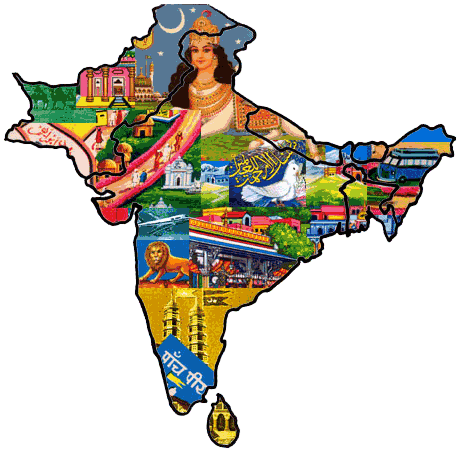Visual Pilgrim
Mapping Popular Visuality and Devotional Media at Sufi Shrines
and Other Islamic Institutions in South Asia
Cluster of Excellence: Asia and Europe in Global Context,
Heidelberg University, Germany
(This presentation is part of a research project that ran
from 2009 to 2011)
 One of the aims of this project was to develop an interactive,
multimedia and multi-layered presentation that tries
to locate transcultural connections and flows
between various Sufi shrines or Islamic pilgrimage centres in India
(and to some extent in South Asia) by plotting hundreds of
documented images, videos, audios and objects onto the maps, thereby
making linkages between different regions. But the project starts
with a focus on one particular shrine, that is,
dargah of Hazrat Nizamuddin in New Delhi, India, and tries to
locate the resonances of its popular visuality in other places as
well.
One of the aims of this project was to develop an interactive,
multimedia and multi-layered presentation that tries
to locate transcultural connections and flows
between various Sufi shrines or Islamic pilgrimage centres in India
(and to some extent in South Asia) by plotting hundreds of
documented images, videos, audios and objects onto the maps, thereby
making linkages between different regions. But the project starts
with a focus on one particular shrine, that is,
dargah of Hazrat Nizamuddin in New Delhi, India, and tries to
locate the resonances of its popular visuality in other places as
well.
Although this Sufi shrine and its related subjects provide many
aspects to research on, currently, our project looks at two
important aspects that relate to our agenda:
1. The site’s role as ‘built heritage’ versus ‘religious
relic’
2. The trans-cultural flows via popular visuality and devotional
media
The work on each of the above themes involved extensive documentation and collection of images, videos, interviews and objects of veneration, besides archival visual material. This documented material is being used to create several presentations to show the networks and trans-cultural flows between geographic locations as well as ideologies and media, both in time and space.
Structure of this presentation:
An important aspect of this presentation (in its original form) was its interactivity between text, images, videos, and geographic locations on the map. This interactivity is not limited only to specific texts or themes, but also provides connections or linkages between themes and studies. In most cases, a user, while reading a text, can click on specific (highlighted) keywords (in the text window) and get to see the location of that concept, image or site on the map (in the map window), as well as explore the images and media (in the media window). The media window also provides additional information (meta-data) about each image or video, which in turn can be explored further by links.
Although one can browse through the entire presentation randomly by
following the links, but an ideal method would to be start by
visiting
this site map
that charts out the concepts and themes of this project in an
overall scheme (also by clicking on the colourful map of South Asia
above).
>>>
Also see:
Tasveer Ghar, a digital archive of South Asia's Popular Visual
Culture